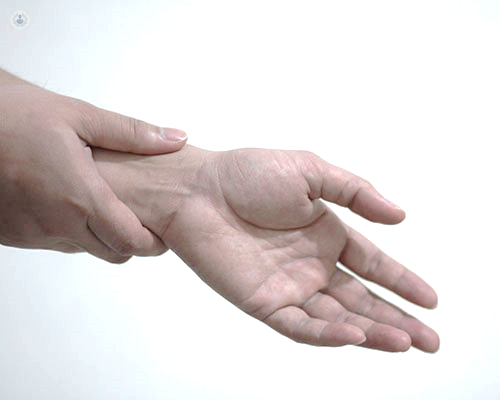Hand and wrist surgery: when it’s needed and what it involves
Autore:Hand and wrist problems are very common. But what kind of problems need surgery to fix them? We spoke to leading consultant plastic and hand surgeon, Mr Frederik Schreuder :

As a specialist in hand and wrist surgery, I often get asked what I do. Hand and wrist conditions are very common and most of us will have a hand or wrist problem at one stage in our lives.
Many hand and wrist conditions are self-limiting, but some don’t settle by themselves and may require medical intervention.
What does a hand and wrist specialist do?
As a hand and wrist specialist I assess and treat patients with hand and wrist problems.
When it comes to assessment, I will always take a full history of the problem and examine the affected area. Frequently I will arrange X-rays and or scans to confirm the diagnosis of the problem.
As for treatment, I plan this in consultation with my patients. Some patients need steroid injections, and on some occasions surgery is required. Treatment can also involve onwards referral for physiotherapy.
What conditions/injuries require hand and wrist surgery?
Some of the most common hand and wrist conditions which may require surgery include:
Less common and more complex conditions include non-union of the carpal bones, ligament injuries and problems with the TFCC (a cartilage in the wrist).
Many of the more common conditions can be treated with steroid injections on an outpatient basis. Surgery for the more common conditions can also often be undertaken under local anaesthetic with the patient fully awake. Almost all hand and wrist surgery is performed as day case surgery – even the more complex cases.
What happen after hand and wrist surgery?
Following surgery, the plan is different for every condition and may involve spending some time in a splint or a cast. Physiotherapy is often needed to prevent stiffness, but this is not the case after every operation. Hand and wrist surgery may also require a period of time off driving and off work to allow for healing – this again varies from condition to condition and patient to patient.



